ADVERTISEMENT
Is there any substance that’s quite as useful to a backyard gardener as diatomaceous earth?

Probably not! This naturally occurring substance, often referred to simply as DE, has a variety of benefits for gardeners. What is it? It’s a simple compound made out of fossilized water plants known as diatoms. The chalky deposits left behind by the plants are known as diatomite, which is then mined and ground up to make a powder – diatomaceous earth.
Here are some of the main uses and benefits of diatomaceous earth for the garden – which ones will you try today?
13 Benefits of Diatomaceous Earth for the Garden
1. Deters Aphids

Aphid family on a green leaf.
Diatomaceous earth is also incredibly effective at getting rid of aphids. These are some of the most common garden pests you will find. They multiply quickly and can cause severe damage to all kinds of edible and ornamental garden plants, like roses. Just dust the area with dry powder or apply it with a sprayer. You may need to reapply every few days.
2. Repel Rodents

Adult brown rat eating garden produce.
If you have a compost pile or a tendency to leave piles of rotting fruit or produce in your garden, there’s a good chance that, at some point or another, you’re going to have rodents to contend with. An easy way to get rid of them is to use diatomaceous earth. Rats, moles, and mice really hate the powder, especially when it’s combined with the scent of various essential oils, like lemon citrus and peppermint.
3. Kill Maggots
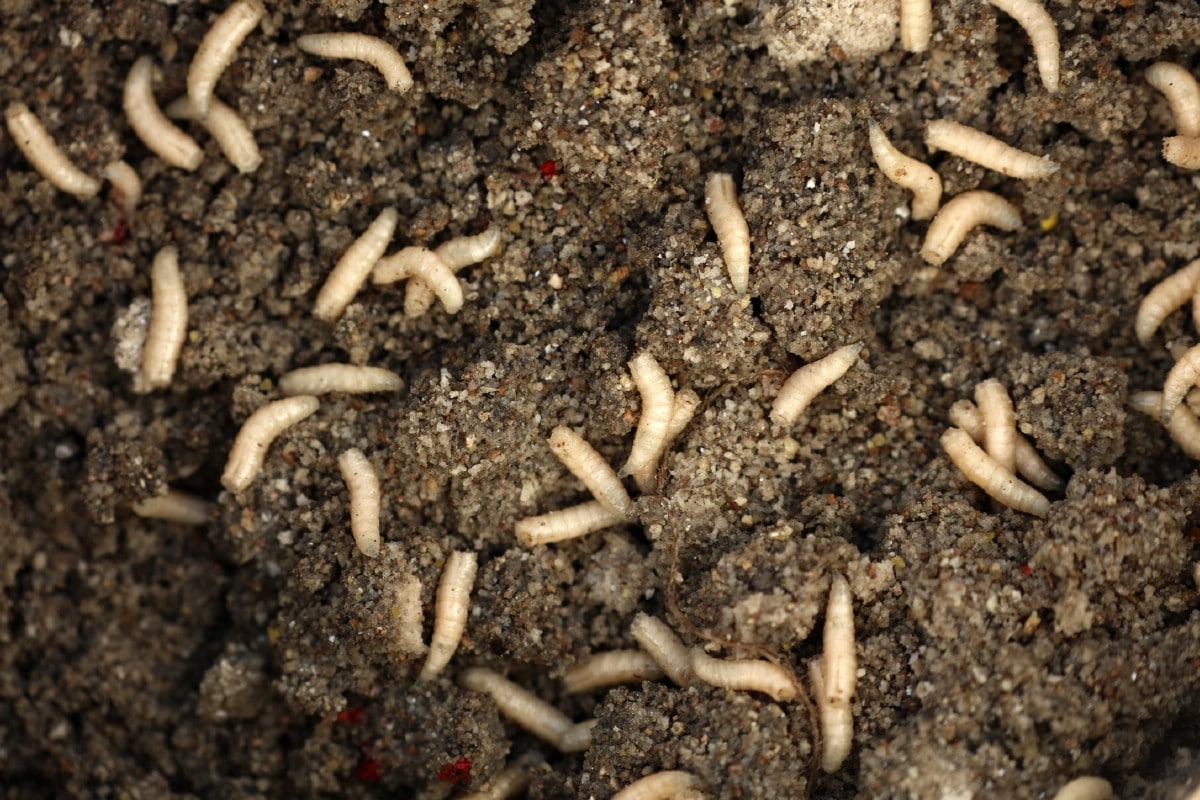
Maggots growing in the garden.
If you have any unused piles of compost lying around, you may have noticed that maggots make them their home. Unless you have an entire coop filled with chickens to tackle the problem for you, it’s one that you, unfortunately, have to deal with on your own.
Luckily, diatomaceous earth to the rescue again. Just dust your compost pile with a bit of DE and it will dry up the bodies of the maggots for you.
4. Preserve Cut Flowers

Florist creating a beautiful bouquet.
Want to preserve your cut flowers so you can enjoy them many seasons later? DE to the rescue again! You can use a mixture of diatomaceous earth to keep your flowers fresh throughout the seasons.
5. Improves Soil Porosity
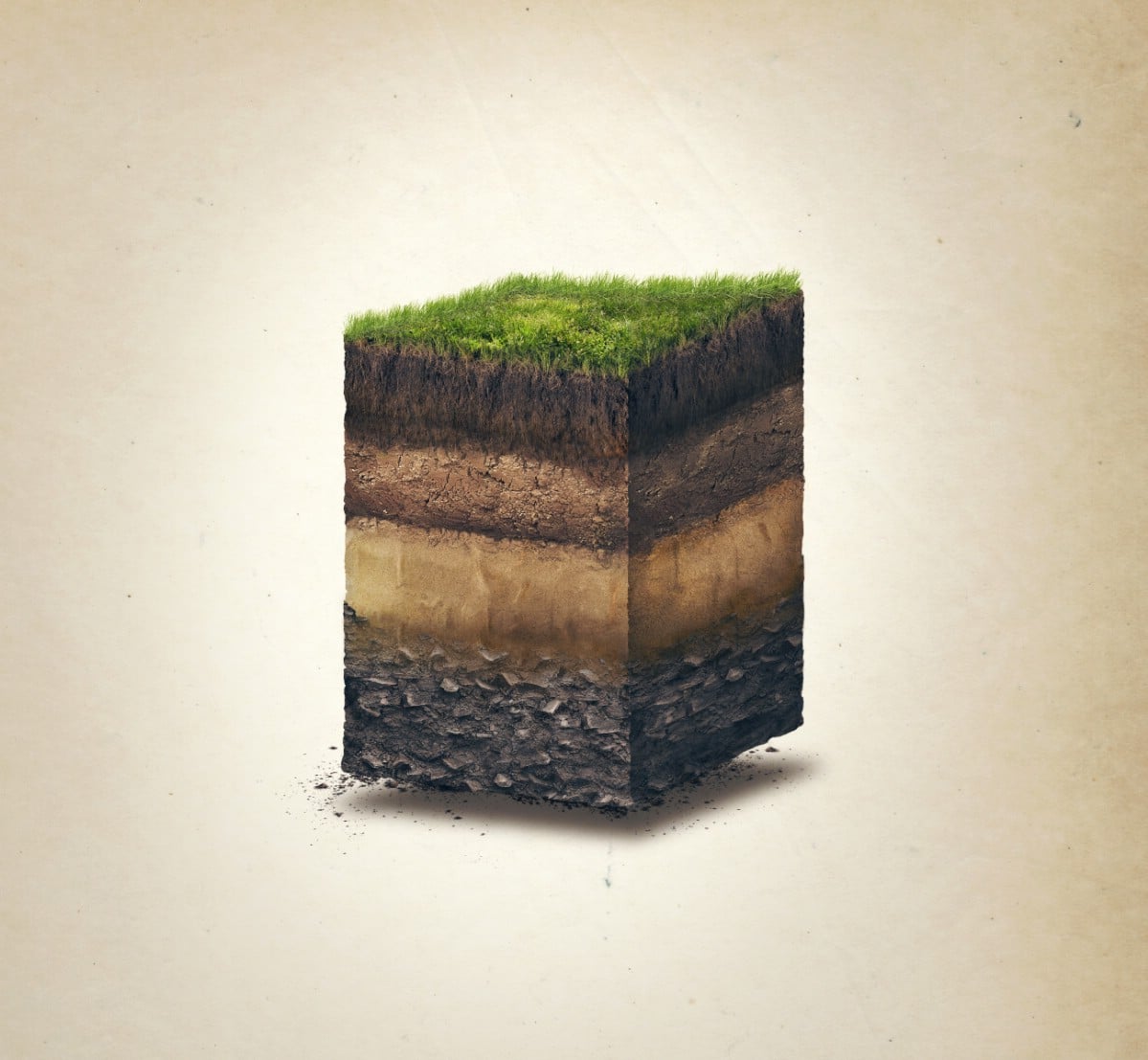
Soil layers.
Diatomaceous earth is not necessarily a fertile substance – it does not offer much in the way of nutrition on its own. However, it has a unique capability of retaining fertilizers and releasing them back to the plants’ roots. It is also porous, making it a great addition to your soul when you are gardening in containers or growing other kinds of plants that like well-draining mediums, like bonsai plants and those that are grown hydroponically.
6. Gets Rid of Gnats and Fruit Flies

Fruit fly close up.
If you’re a gardener, you’ve likely come up close and personal with gnats a time or two. These small winged insects are often found around things like overripe fruits, potted plants, overwatered soil, or even areas where garbage or refuse tend to build up.
It doesn’t take a lot to attract them – in fact, anything that’s even remotely damp can attract these pesky pests. Unfortunately, as annoying as they are to you, they’re even more detrimental to plants. They can lay their eggs in the soil and will feed on fungi, algae, and decaying plant matter, which can ultimately harm a plant’s health.
You can easily use diatomaceous earth to get rid of them. All you need to do is dust your plants with DE to keep it dry. This will also dry out any gnats or their larvae that land there. Every time you water, add a bit more – it will keep other insects, like blackflies and whiteflies, at bay, too.
7. Kills Ants

Ant colony invading a door.
There are several reasons why ants might take up residence in your garden. More often than not, they’ve been drawn there because they are attracted to honeydew, the sticky sweet substance emitted by aphids as they feed on your plants. Fortunately, you can get rid of ants by making a trail of diatomaceous earth. It’s most effective around ornamental and edible crops.
8. Remove Slugs
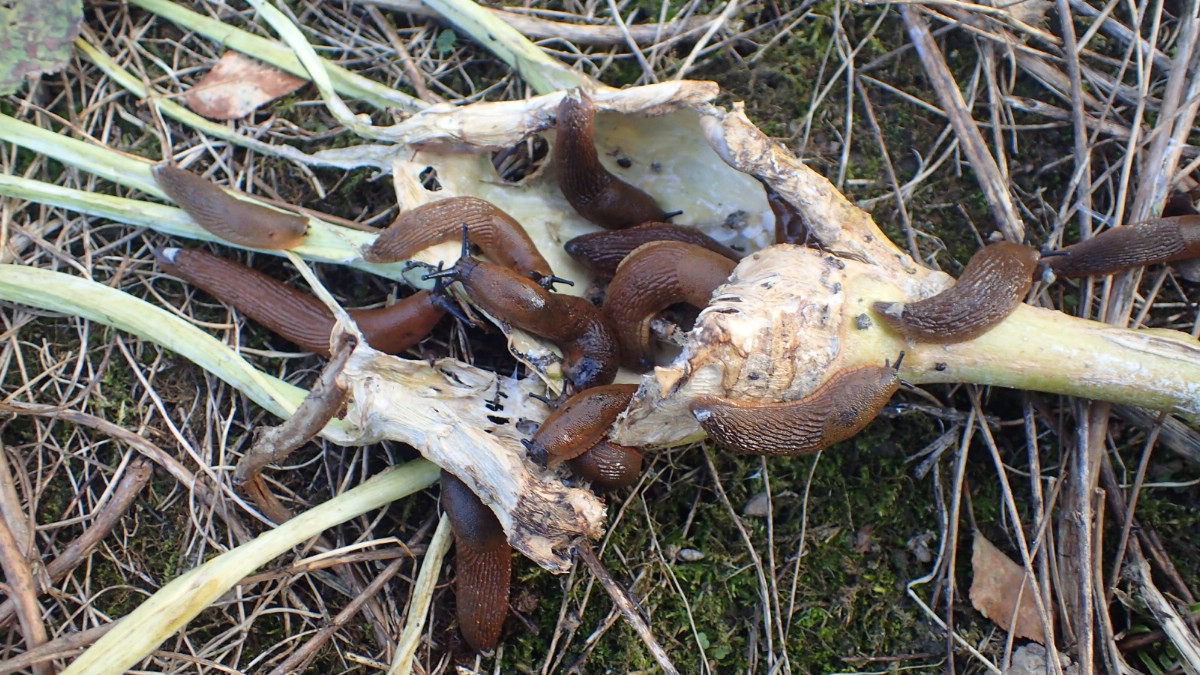
Slugs eating a kohlrabi.
Diatomaceous earth can also get rid of slugs. Slugs have soft bodies and the sharp particles of diatomaceous earth will penetrate and cut them deeply, drying them out. All you have to do is make a thin circle of the powder around your plants and you shouldn’t have any more issues with slugs and similar pests – like cutworms and caterpillars – destroying your plants. We also have a great diy project to protect your garden from slugs and snails.
9. Eliminate Hornets and Wasps
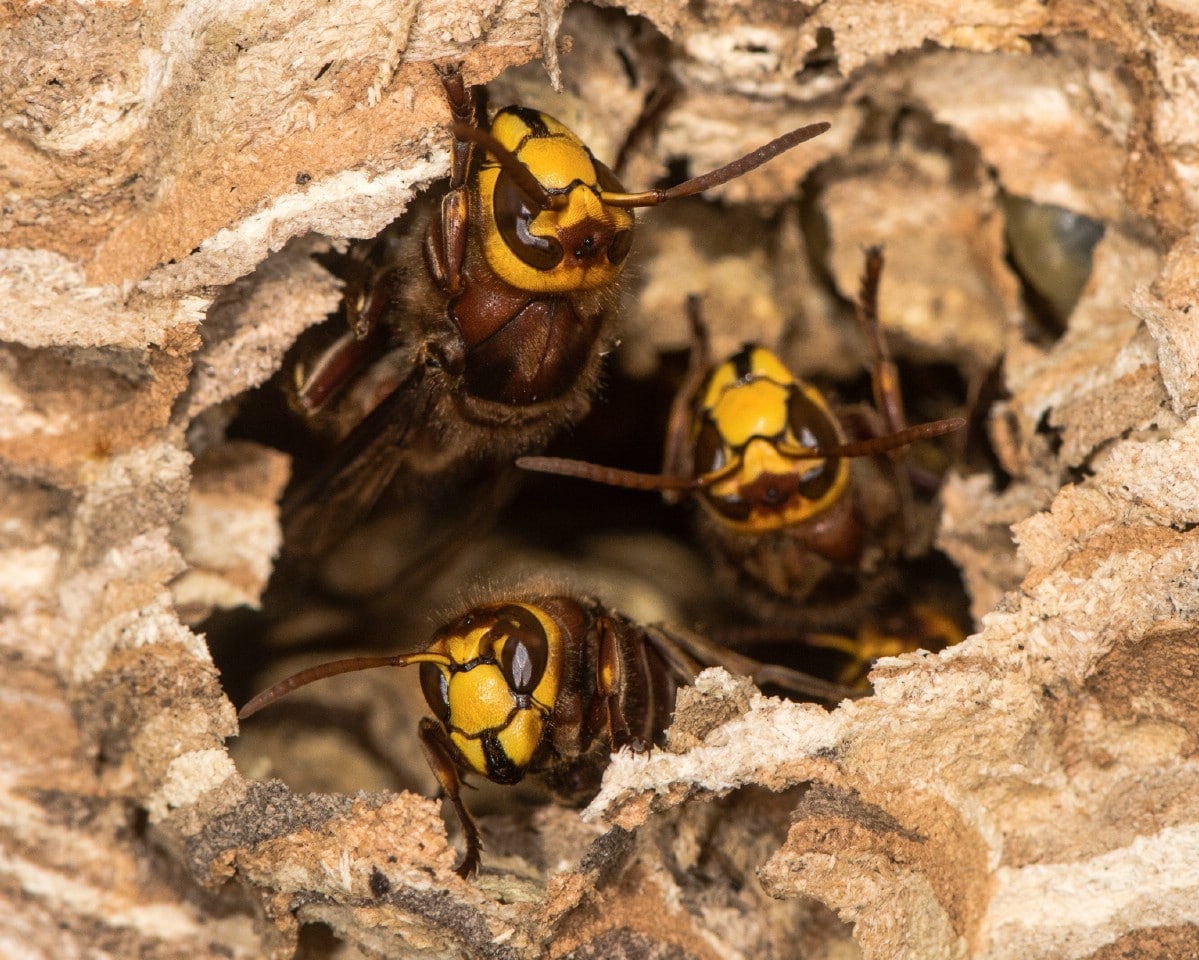
Hornets in the nest.
There is nothing more frustrating than trying to work in your garden, only to return to the house with what feels like a million hornet stings just a few minutes later.
Wasps are vital when it comes to the health of your garden, helping to control damaging pests like aphids and caterpillars. However, you might want to get rid of wasps with diatomaceous earth if you’ve had a lot of problems in the past.
Just dust susceptible areas and reapply every time it rains. They won’t build their nests on areas that have been treated with this powder.
10. Use it as a Deodorizer
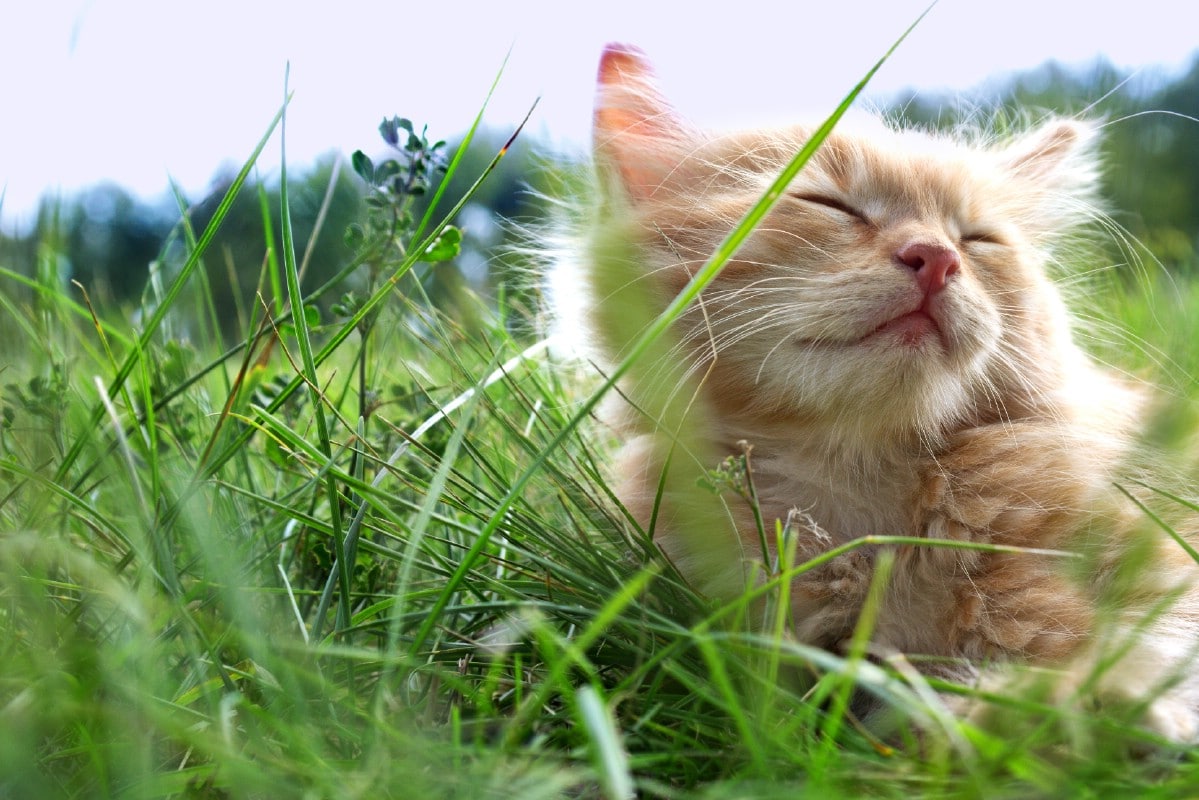
Cute kitten in the grass.
Diatomaceous earth makes a highly effective deodorizer, too. If you have a spot in your garden that your cat likes to use as his litter box, all you need to do is mix some diatomaceous earth into the top layer of the soil. You can also just sprinkle it on top. This will help balance out unpleasant smells in a hurry.
11. Eliminate Ticks
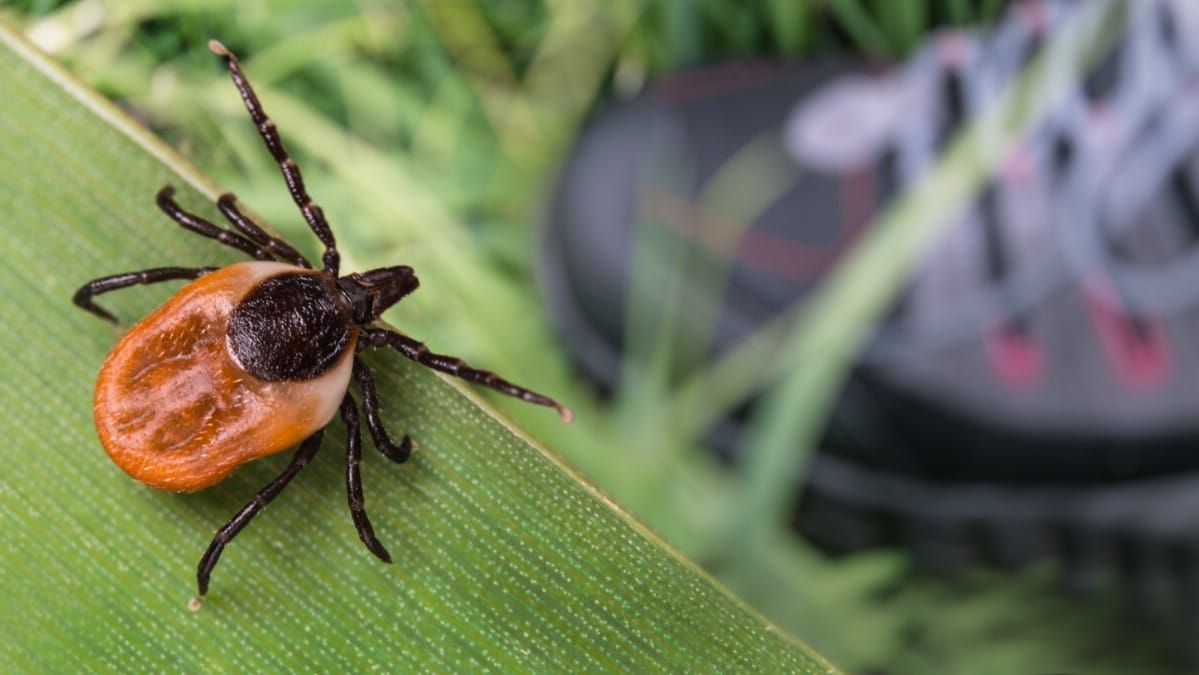
Tick in the garden.
Ticks aren’t necessarily going to harm your garden plants, but they can make working in your garden a serious hazard. You can get rid of them by creating a perimeter dusting of diatomaceous earth. It will help prevent ticks from latching on and transmitting dangerous diseases to you, like Lyme disease and Rocky Mountain spotted fever. Here’s how to prevent tick bites if you’re hiking or traveling.
12. Eliminate Flies

Fly on a green leaf.
House flies can also be eliminated with a bit of diatomaceous earth. Flies will not only feed on many kinds of garden plants, harming their overall health, but they sometimes bite humans and can transmit a ton of diseases, too.
The easiest way to eliminate flies is to dust with diatomaceous earth. Although the smell and high moisture of your garden are likely what’s attracting flies to these areas, using diatomaceous earth will help get rid of them for good. We also have a nice diy fly catcher you can use.
13. Get Rid of Many Other Insects

Insects on a door.
Although we’ve listed many insects against which diatomaceous earth is effective, the list above is far from comprehensive. In fact, diatomaceous earth is also quite potent when used as a natural insecticide against thrips, earwigs, bedbugs, flea beetles, cockroaches, and snails, too.
It will not harm worms or beneficial microorganisms that live in the soil.
How to Use Diatomaceous Earth
If you are planning on using diatomaceous earth around edible plants, it’s important that you only use food grade diatomaceous earth. You don’t want to use the kind that’s designed for swimming pool filters, as this has a different chemical makeup that might not be great for you to ingest.
When you apply diatomaceous earth, wear a dust mask so you don’t inhale too much. It can easily irritate the mucous membranes in your mouth and nose.
Otherwise, though, it should pose no threats to you, your pets, or beneficial wildlife. It is important to note that you should avoid using diatomaceous earth at times when your plants need to be pollinated, as it can deter pollinators like honey bees from visiting your plants.
With all of these potential benefits of diatomaceous earth for the garden, isn’t it time that you gave it a try?
Related Content
This post was first published here

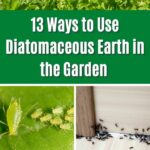





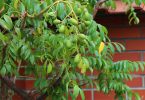


Leave a Comment
You have to login first to post a comment. You can register if you have no account yet.